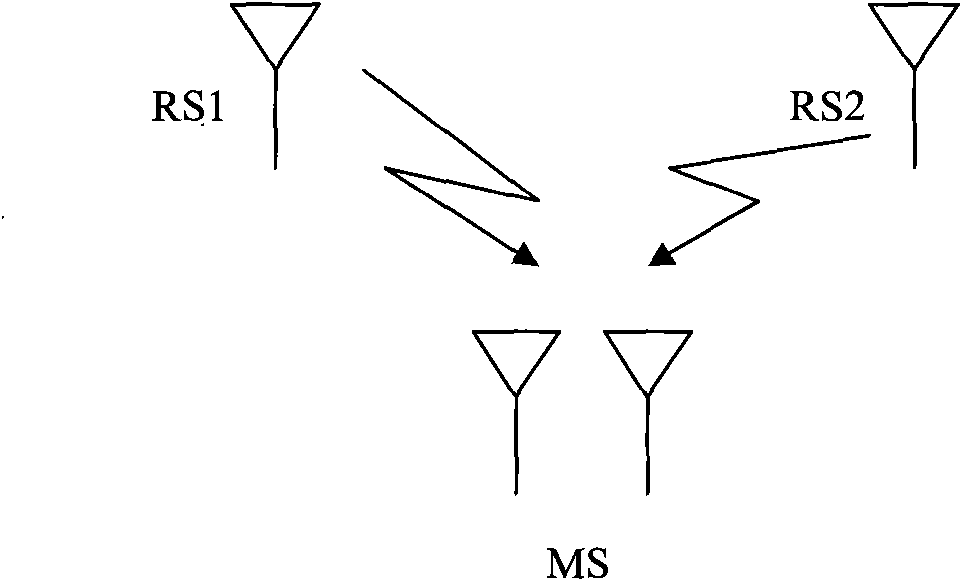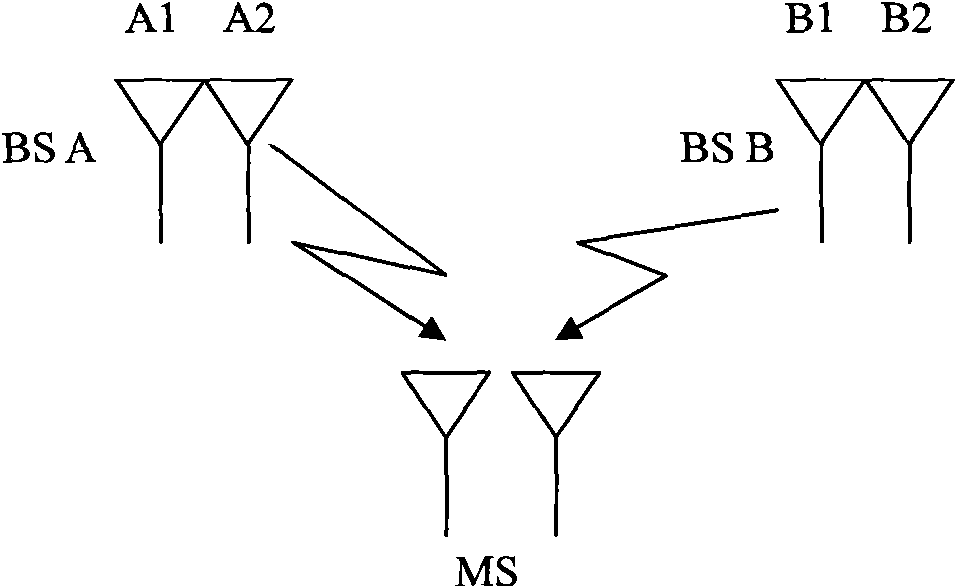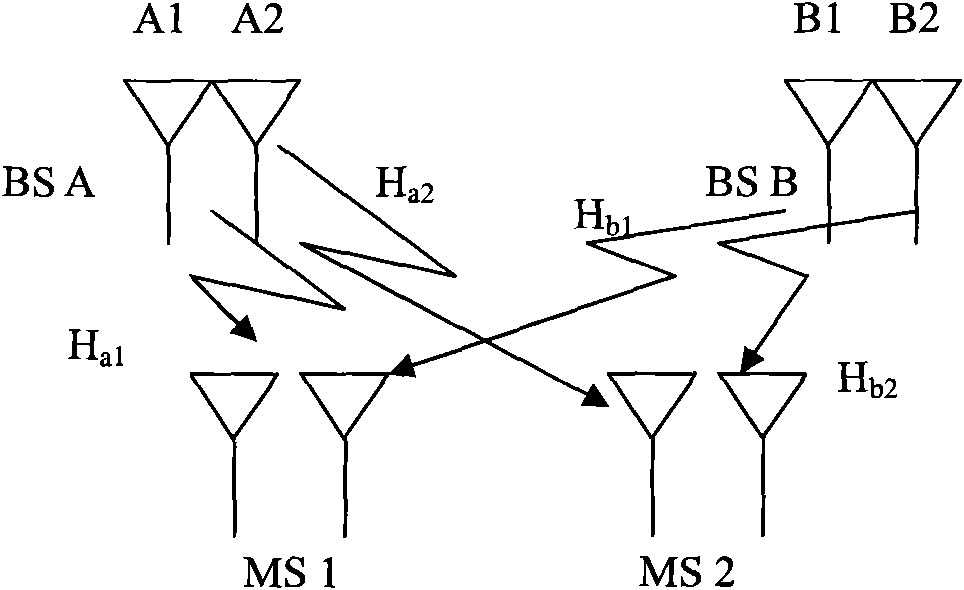Data transmitting method and base station control system
A data transmission method and base station control technology, applied in diversity/multi-antenna systems, space transmit diversity, advanced technology, etc., can solve the problem of high power control requirements, achieve low power control requirements, be easy to implement, and improve signal detection performance Effect
- Summary
- Abstract
- Description
- Claims
- Application Information
AI Technical Summary
Problems solved by technology
Method used
Image
Examples
Embodiment 1
[0027] Embodiment 1: This embodiment is a data transmission method in single-user MIMO mode. see figure 2 , base station A (BS A) and base station B (BS B) are two adjacent base stations, each equipped with two antennas, respectively A1A2 and B1B2, first, base station A and base station B with multiple antennas determine the data to be sent by each antenna and transmission mode, and then on the same time-frequency resource, respectively transmit data s1 and s2 to the terminal MS in the form of diversity Alamouti, that is, at the first moment, both antennas A1 and B1 transmit s1, antennas A2 and B2 both transmit s2, and at the second At this time, antennas A1 and B1 both transmit -s2*, and antennas A2 and B2 both transmit s1*. If base station A is the main serving base station, the terminal does not need to distinguish the signals from base station B. From the perspective of the terminal, all signals come from base station A. Here, base station B copies and transmits all sign...
Embodiment 2
[0028] Embodiment 2: This embodiment is a data transmission method in single-user MIMO mode. still refer to figure 2 , base station A and base station B are two adjacent base stations, each equipped with two antennas, namely A1A2 and B1B2, first, base station A and base station B with multiple antennas determine the data to be transmitted by each antenna and the transmission method, and then at the same time Each frequency resource transmits s1 and s2 to the terminal MS in a multiplexing manner, that is, at the same time and on the same frequency, antennas A1 and B1 both transmit s1, and antennas A2 and B2 transmit s2 to the terminal MS. Similarly, if base station A is set as the main serving base station, the terminal does not need to distinguish the signals from base station B. From the perspective of the terminal, all signals come from base station A. Here, base station B copies and transmits all signals from base station A to base station A. Because After going through d...
Embodiment 3
[0029] Embodiment 3: This embodiment is a data transmission method in multi-user MIMO mode, that is, there are two or more user terminals, two are used as an example here, and the user terminals all belong to the same transmission group. see image 3 , base station A and base station B are two adjacent base stations, and are equipped with two antennas respectively, namely A1A2 and B1B2. First, base station A and base station B with multiple antennas determine the data to be transmitted by each antenna and the transmission mode, and then use Send data s1 and s2 to terminals MS1 and MS2 in the way of space division multiple access (SDMA), that is, in base station A, s1 is mapped to A1A2 through the precoding vector or matrix corresponding to MS1, and s2 is mapped to the precoding vector or matrix corresponding to MS2 to A1A2, A1A2 sends the combined signal containing s1 and s2 to MS 1 and MS2 via channels Ha1 and Ha2, and in base station B, s1 is mapped to B1B2, s2 is mapped to...
PUM
 Login to View More
Login to View More Abstract
Description
Claims
Application Information
 Login to View More
Login to View More - R&D
- Intellectual Property
- Life Sciences
- Materials
- Tech Scout
- Unparalleled Data Quality
- Higher Quality Content
- 60% Fewer Hallucinations
Browse by: Latest US Patents, China's latest patents, Technical Efficacy Thesaurus, Application Domain, Technology Topic, Popular Technical Reports.
© 2025 PatSnap. All rights reserved.Legal|Privacy policy|Modern Slavery Act Transparency Statement|Sitemap|About US| Contact US: help@patsnap.com



